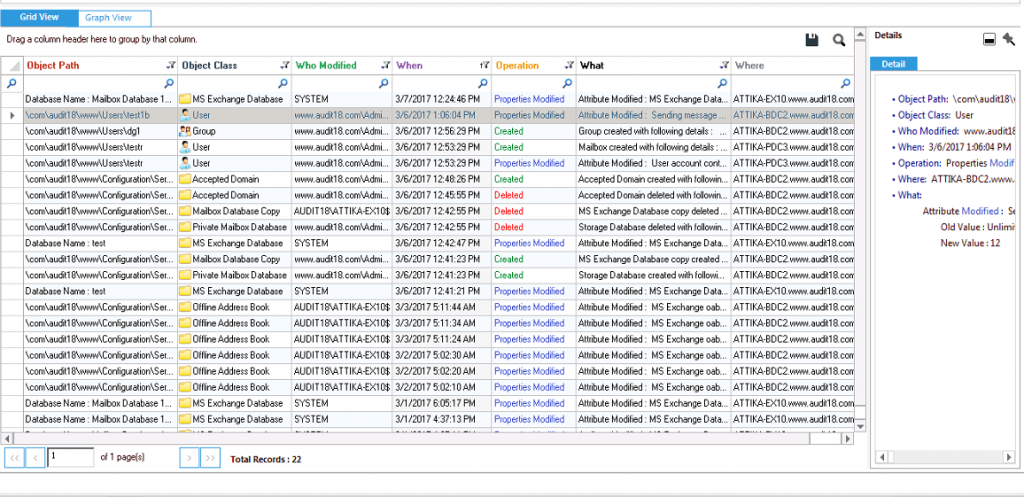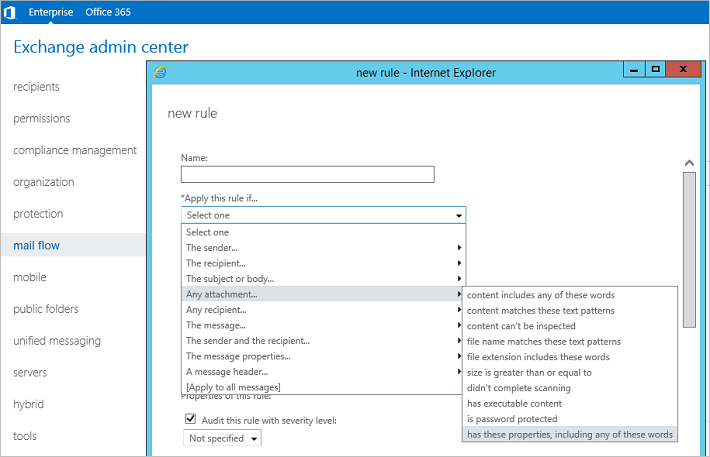
Locate all occurrences of maxReceivedMessageSize in the file and change their values, for example, to 209715200.Locate maxAllowedContentLength and change its value to 209715200.%ExchangeInstallPath%ClientAccess\exchweb\ews\web.config Log on to your target MS Exchange Server Mailbox role machine.
 Locate maxAllowedContentLength and change its value to 209715200. Locate maxRequestLength and change its value to 204800. Open the file Web.config by using any text editor. %ExchangeInstallPath%FrontEnd\HttpProxy\ews\web.config Log on to your target MS Exchange Server CAS role machine. We therefore recommend backing up the files you are about to modify. Consider those changes as temporary measures that you will revert at the end. For example, EWS-based email clients may stop working. Applying the changes might affect some of your services. Be aware that the settings mentioned here are applied globally - it is not possible to limit them to particular mailboxes or groups of users. You can modify all values to suit your needs. In the instructions below, we use a value of 200 MB (equal to 204800 KB or 209715200 Bytes) as an example. The message exceeds the maximumįollow the solutions below to adjust the Exchange limits depending on your Exchange version, or read about additional settings. Errors caused when the TransportConfig MaxReceiveSize value is too low or not yet set:. The request failed with HTTP status 507: Insufficient Storage. Errors caused when the requestLimits maxAllowedContentLength value is too low:. Reduce the size of the request and try again. Errors caused when the maxReceivedMessageSize value is too low:. If you attempt to upload items exceeding the message size limit, this results in the following (or similar) errors logged to the software's log files: To change that, you need to modify the Exchange EWS web.config file(s) and configure some of the Transport Service settings via the Exchange Management Shell, as shown later in this article. Of course, this does not apply to scenarios in which you want to restore items to a different server than the original one, or when you changed the settings below in the meantime.īy default, MS Exchange Server 2010/2013/2016/2019 does not accept items bigger than 30 MB to be uploaded via EWS. Since the large-sized item in question originates from the same server, it usually means that this particular server accepts such large items. For example, if you find a large item on an Exchange server, and it is correctly backed up, you will probably have no problems uploading it back (restoring) to the same Exchange server. If you use CodeTwo Backup, most likely you will not need to apply the changes listed below. Read more about Exchange Online limits on Microsoft's website. Be aware that it may take up to half an hour for the changes to take effect.
Locate maxAllowedContentLength and change its value to 209715200. Locate maxRequestLength and change its value to 204800. Open the file Web.config by using any text editor. %ExchangeInstallPath%FrontEnd\HttpProxy\ews\web.config Log on to your target MS Exchange Server CAS role machine. We therefore recommend backing up the files you are about to modify. Consider those changes as temporary measures that you will revert at the end. For example, EWS-based email clients may stop working. Applying the changes might affect some of your services. Be aware that the settings mentioned here are applied globally - it is not possible to limit them to particular mailboxes or groups of users. You can modify all values to suit your needs. In the instructions below, we use a value of 200 MB (equal to 204800 KB or 209715200 Bytes) as an example. The message exceeds the maximumįollow the solutions below to adjust the Exchange limits depending on your Exchange version, or read about additional settings. Errors caused when the TransportConfig MaxReceiveSize value is too low or not yet set:. The request failed with HTTP status 507: Insufficient Storage. Errors caused when the requestLimits maxAllowedContentLength value is too low:. Reduce the size of the request and try again. Errors caused when the maxReceivedMessageSize value is too low:. If you attempt to upload items exceeding the message size limit, this results in the following (or similar) errors logged to the software's log files: To change that, you need to modify the Exchange EWS web.config file(s) and configure some of the Transport Service settings via the Exchange Management Shell, as shown later in this article. Of course, this does not apply to scenarios in which you want to restore items to a different server than the original one, or when you changed the settings below in the meantime.īy default, MS Exchange Server 2010/2013/2016/2019 does not accept items bigger than 30 MB to be uploaded via EWS. Since the large-sized item in question originates from the same server, it usually means that this particular server accepts such large items. For example, if you find a large item on an Exchange server, and it is correctly backed up, you will probably have no problems uploading it back (restoring) to the same Exchange server. If you use CodeTwo Backup, most likely you will not need to apply the changes listed below. Read more about Exchange Online limits on Microsoft's website. Be aware that it may take up to half an hour for the changes to take effect. EXCHANGE 2016 ATTACHMENT SIZE LIMIT HOW TO
See this Microsoft article to find out how to check and configure your Office 365 message size limits. This limit has been changed, and the maximum message size is now 150 MB, but you need to make sure your Exchange Online mailboxes are actually set to this limit. Until April 2015, the maximum allowed message size in Exchange Online was 25 MB, and this size could not be modified by a tenant admin.

The message exceeds the maximum supported size., Cannot save changes made to an item to store. System.Exception: The underlying connection was closed: An unexpected error occurred on a send. Click the links to read more.Īny attempt to upload items exceeding the Office 365 EWS size limits results in the following (or similar) errors logged to the software's mailbox log files: Error while uploading package. Solution:ĭepending on your environment, you might need to edit the configuration files of Exchange Web Services (EWS) and configure the Transport Service or set your mailboxes correctly.

EWS is used by selected CodeTwo products such as migration or backup software. This may be helpful when uploading large items via Exchange Web Services (EWS). You would like to change the message size limit, set on your target Exchange Server.







 0 kommentar(er)
0 kommentar(er)
